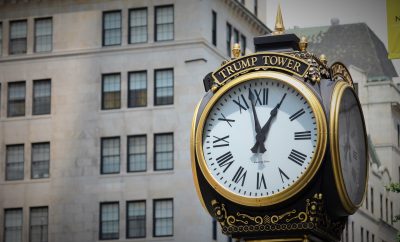 Image Courtesy of Elizabeth Hahn/www.opticiantraining.org; License: (CC BY 2.0)
Image Courtesy of Elizabeth Hahn/www.opticiantraining.org; License: (CC BY 2.0)
Politics
The Millennial Vote in 2016 and Beyond
People like to caricature millennials as entitled, uninformed, lazy, and a host of other characteristics that are largely off the mark. One thing we all can agree on, however, is the decisive role millennials played in the 2016 election–by either voting or not voting–and the role young people will play in the future of U.S. civic life. Millennials are the most diverse chunk of the electorate in the history of the country, making for an elusive group, one that politicians struggle to understand and connect with. So how did millennials–in all of our diverse glory–vote last Tuesday? And how will our preferences and attitudes shape elections to come?
How Millennials Voted
Members from the Center for Information and Research on Civic Learning and Engagement (CIRCLE) at Tuft’s Tisch College hosted an event at the Brookings Institute in Washington D.C. on Thursday, where they presented data they averaged from multiple sources and polls in regard to the youth vote in 2016. One thing CIRCLE found is that young people voted at about the same rate in 2016 as they did in 2012, with about half of millennials, or 24 million, casting ballots. Of those who voted, 57 percent did so for Hillary Clinton, and 34 percent for President-elect Donald Trump. But these figures tell only a fraction of the entire story.
“There are many stories of young people, and they have different realities, different priorities, and how they voted really reflected that divide they have,” said Kei Kawashima-Ginsberg, the director of CIRCLE who presented the data at Brookings. Unsurprisingly, young people’s ethnicity, religion, race, and gender largely colors their feelings and perspectives, and thus shape how they vote.
For instance, in CIRCLE’s pre-election poll, 67 percent of African-Americans youth, and 36 percent of young Latinos said they would be afraid of a Trump presidency, much higher than young whites who felt the same. This is unsurprising, given the fact that the vast majority of Trump’s voters were white, among young, middle-aged, and older voters alike. But there is more to that story as well. Fifty percent of young white women voted for Clinton, while 42 percent voted for Trump. Comparatively, 54 percent of young white men voted for Trump, while 35 percent voted for Clinton.
Shifting Identities
And although millennials turned out in similar numbers as they did in 2012, enthusiasm toward the two major parties is somewhat down. At the Brookings event, Kawashima-Ginsberg and her CIRCLE colleague Abby Kiesa, discussed how political identities and affiliations are different for millennials than they were for previous generations. For example, young people are more likely to embrace the ideological label of “liberal,” yet are also less likely to identify as Democrats.
Young people might increasingly embrace a liberal ideology, Kiesa said, “but don’t necessarily see the Democratic party as an institution that can represent and advance those ideas.” She thinks at least some of this is “related to some young people’s curiosity of third parties.” The Brookings panel also included two important voices, Carmen Berkley and Jane Coaston, both millennials and women of color. They discussed how to keep millennials of all stripes engaged in the political process, and not just every four years, as well as the crosscurrents that could explain how young people voted in 2016.
What Kind of Change?
Like then-Senator Barack Obama in 2008, while with a decidedly different tone, “change” was a galvanizing element of 2016, especially for Trump voters. Coaston, a political reporter for MTV News, questions what change means exactly. Trump voters, she said, “were looking for change, but they weren’t looking for Republican style change, they were looking for Trump style change.”
In other words, it wasn’t change via Republican orthodoxy–small government, less regulation, and free trade–but via Trump’s radical, if not entirely ideological, platform. In the final weeks of the campaign, Coaston said, Trump started talking about infrastructure investment and making schools affordable. “That’s not standard GOP language,” she said.
Engagement
Berkley, the civil, human, and women’s rights director at the American Federation of Labor and Congress of Industrial Organizations, is focused on a different sort of change. “If you’re a group of white people that work in an institution, and you’re talking about race, racism, gender, and LGBTQ issues, and there are none of us sitting at the table then you are already doing it wrong,” she said.
Berkley thinks the key to ensuring progressive goals expand and strengthen is that communities of color need to be represented in leadership positions. Another key factor of millennial engagement, she said, is though the media channels they use most.
Kawashima-Ginsberg thinks listening to young people’s want for change, not ignoring it and silencing it, is the key to an engaged civic society in the future. “We need to make sure we take that voice of dissent to the current system and make sure they can engage in a professional and democratic manner moving forward,” she said. “Mending our civic fabric is not a luxury, it’s a necessity and I hope we’re all ready to contribute.”








Comments